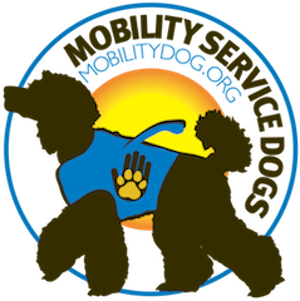What Is a Mobility Assistance Dog? Everything You Need to Know
Mobility assistance dogs are more than just companions — they’re life-changing partners for individuals with physical disabilities. These highly trained service dogs help people navigate daily life with greater independence, safety, and confidence. Whether opening doors, retrieving items, or providing physical support, mobility dogs are indispensable to those who rely on them.
In this article, we’ll explain what a mobility assistance dog is, what tasks they perform, who qualifies for one, and how to begin the process of getting or training one.
What Is a Mobility Assistance Dog?
According to the ADA Dictionary, a service dog is any dog that is individually trained to do work or perform tasks for the benefit of an individual with a disability, including a physical, sensory, psychiatric, intellectual, or other mental disability.
A mobility assistance dog, also known as a mobility service dog, is a specially trained service animal that helps individuals who have physical impairments affecting their mobility. This may include people who use wheelchairs, walkers, or crutches, as well as those with balance disorders, muscle weakness, or other movement-limiting conditions.
These dogs are not the same as emotional support animals or therapy dogs. Mobility assistance dogs are trained to perform specific, task-based actions that directly mitigate their handler’s disability — and are protected under the Americans with Disabilities Act (ADA).
Common Tasks Mobility Dogs Perform
Mobility service dogs are trained to meet the specific needs of their handler. Some of the most common tasks they perform include:
Retrieving dropped items (keys, phones, bags, etc.).
Pushing automatic door buttons.
Providing balance or bracing support.
Helping their handler rise from a seated or fallen position.
Carrying items in a backpack or harness.
Assisting with dressing or undressing.
Navigating around obstacles and tight spaces.
In essence, a mobility dog acts as an extension of their handler, offering not just assistance, but also greater autonomy.
Who Benefits from a Mobility Assistance Dog?
Anyone with a qualifying physical disability that limits their ability to perform major life activities could benefit from a mobility assistance dog. Common may conditions include; spinal cord injuries, Cerebral palsy, Multiple sclerosis (MS), Muscular dystrophy, Parkinson’s disease, Arthritis or joint disorders, Stroke survivors, Vertigo or balance disorders and other physical impairments or injuries. Each case is evaluated individually. A medical professional or disability advocate can help determine if a mobility dog would be a good fit for a person’s specific needs.
What Breeds Make Good Mobility Dogs?
Temperament testing and early training are key in selecting the right dog for mobility work. Not all dogs have the temperament or physical build required for mobility work. Ideal candidates are typically:
Large enough to provide stability or bracing (often 50+ pounds).
Strong and healthy with no joint issues.
Calm, confident, and obedient by nature.
Why Poodles Make Great Mobility Service Dogs
Standard Poodles make excellent mobility service dogs thanks to their ideal combination of size, strength, intelligence, and trainability. Originally bred as working retrievers for duck hunting, they are strong swimmers and physically capable, typically weighing between 40 and 85 pounds—perfect for providing stability, retrieving items, and assisting with mobility tasks. Their high intelligence, ranked among the top of all dog breeds, allows them to learn complex commands and adapt to dynamic environments. Poodles are also known for their calm, people-oriented temperament, which makes them easy to train and dependable in public settings. Additionally, their low-shedding, hypoallergenic coats are a practical advantage for individuals with allergies or limited mobility, as they require less cleanup and release minimal dander.
How to Get a Mobility Assistance Dog
You can get a mobility service dog through a service dog organization such as MobilityDog. Before applying you are welcome to come INFORMATIONAL Virtual Gathering 2nd Tuesday of each month 3:00- 3:45 PM PT to learn more.

